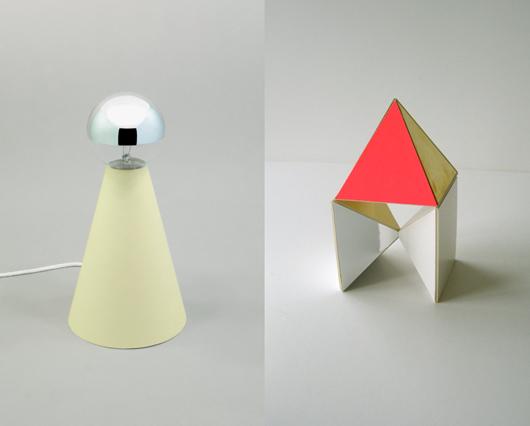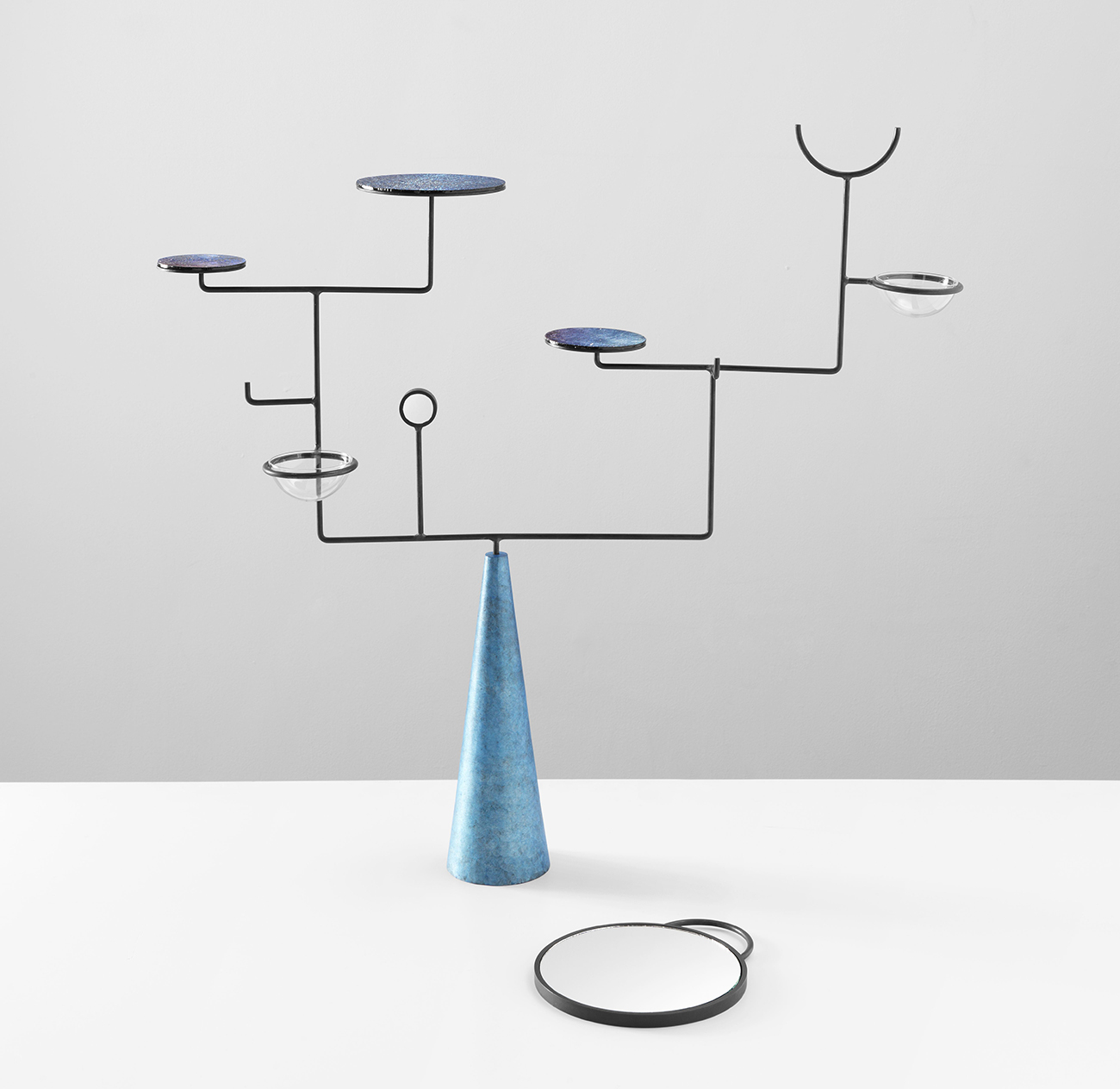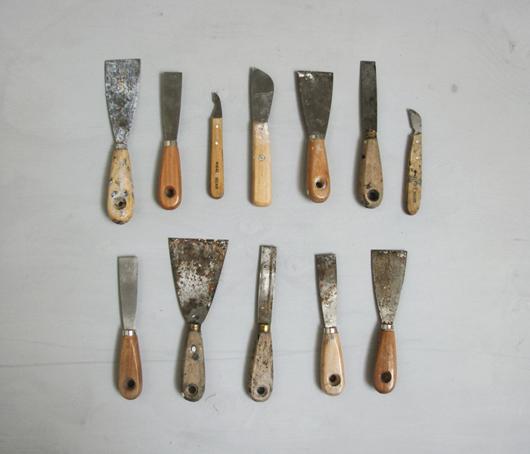
10.20.11
8 Things
Jo Meesters, Designer
Old or discarded objects may leave their mark on many a designer’s practice these days, but few so literally as Jo Meesters’s: Peer inside any one of the Pulp vessels or lamps he sculpts from a self-engineered slurry of newspaper and glue, and odds are you’ll see the imprint of whatever busted-up thrift store find he used as its mold. In fact, whatever time Meesters doesn’t spend designing, he tends to spend combing through second-hand shops, searching for abandoned items with intriguing materialities or archetypal forms. “When I’m developing new products, they’re always the forms I come back to, because they’re recognizable for most people,” says the Philippines-born, Eindhoven-based talent. Once he co-opts those historical influences into one of his own objects, “it becomes this weird sensation; you’ve never seen it before, and yet you can also relate it.”
That twinge of familiarity is especially important for Meesters precisely because his designs are so novel; he calls his studio a “laboratory” owing to all the invention that goes on inside it. The Pulp vases arose from a two-year odyssey of experimentation with paper waste, and for the past year, he’s been all but consumed with searching for low-fi approaches to textile innovation, like a lampshade woven through with glow-in-the-dark yarn. “I try to create my own kinds of crafts,” Meesters explains. “For example, I was doing this project with glass, but hand-blowing it is so expensive, so I began looking for alternatives — maybe I can do glass-cutting or sandblasting. The moment I look for other approaches that are possible within my limitations, crazy things sometimes come out, different kinds of techniques that I make up.”
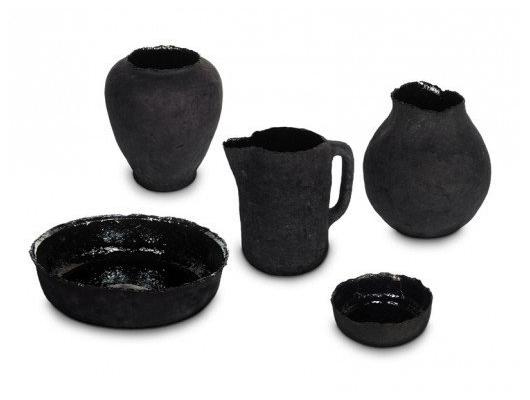
Pulp series by Jo Meesters
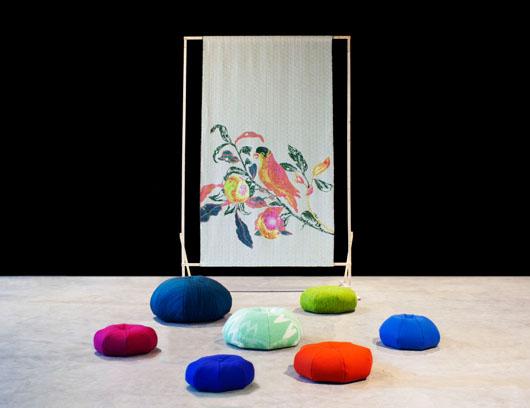 Meesters’s Neo Vanitas poufs, currently debuting at Dutch Design Week
Meesters’s Neo Vanitas poufs, currently debuting at Dutch Design Week
His next subject may be his most eccentric yet: soap, which he fixated on after receiving a scented bar as a gift and then seeing Turner Prize–winner Karla Black’s Venice Biennale installation shortly thereafter. Meesters plans to research soapmaking on the internet and then spend the forseeable future developing his own twists on the recipe. “Maybe I’d like to see how you can combine it with functionality,” he says, “but I also like this idea that you have this thing and you touch it every time, and it shrinks into this small form, and then eventually it’s gone.” That notion stands in direct contrast to Meesters’s appreciation for objects that have been around for generations, his own collection of which stays packed away in a trunk unless he’s being called upon to photograph it for stories like this one. But that, of course, is what makes it perfect fodder for a curious mind like his.
PUTTY KNIVES (top)
“These are the most handy tool in the studio, especially when we have a lot of production going on. They’re the one thing that’s always visible around here. When the Pulp Vases are dry on the outside, we need to release them from the vessels underneath, so go through a lot of putty knives doing that. What I like about this picture is how you can tell they’ve been used a lot. They get wet and develop this wear on them. Some are covered with paper, or other materials; on the lower row you see a rust thing happening. Eventually the ones that aren’t working anymore, I collect. When they’re rusty it could leave a mark on the product, so I put them in another box. When you put them all together, it will eventually become evidence of all the hard work and effort I’ve put into all of my objects.”
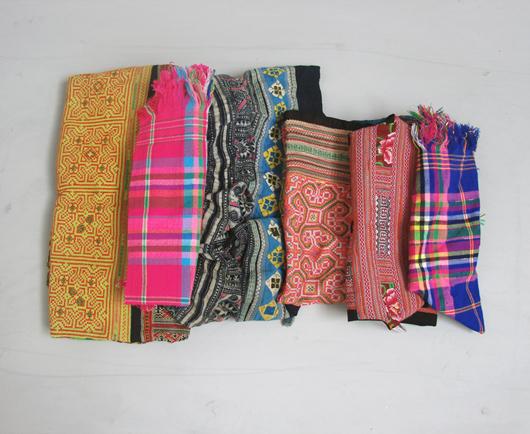
FOLK TEXTILES
“Most of these I bought in Vietnam. I went to the north and there were women in tribes making them, each tribe with its own colors. It’s fascinating how they use materials and techniques like dyeing and embroidery to differentiate themselves that way. For me it’s like a kind of graphic code. At the Academy I was trained in textiles, but my grandmother also worked in a factory making costumes and dresses, so I grew up around textiles and sewing machines. I tried to put that part of me aside but it didn’t work; when it’s something you already know and you’ve grown up with, you have the urge to try something else, but it always comes back. Eventually I thought, it’s a part of me, so I’m going to embrace it.
“Now I’m working on textiles at the Textile Museum in Tilberg, and thinking about translating the kind of handmade techniques visible in these Vietnamese fabrics into machine-driven techniques. I brought these pieces to the museum as samples. I actually had to buy a new suitcase to carry back all of the samples, and the ceramics — that’s how bad it is. I went berserk, but had to limit myself because otherwise I would have bought everything in the village. It’s emotional, something tells you that you have to have it. Then the other side of your brain tells you it’s not practical.”
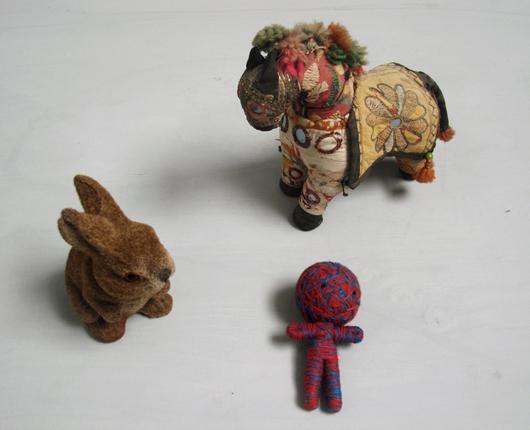
TEXTILE DOLLS
“I bought the horse ten years ago at a second-hand shop, and I fell in love with it immediately. I kind of adopted him. It’s very old and uses a lot of techniques, like the embroidery that keeps the small glass mirrors in place for the eyes. It’s kind of worn out, but I love how it’s like a patchwork of leftovers. The rabbit is 6 inches high and hard-molded with a kind of skin on top of it. When I walked into the shop I found it in, it was hidden in a corner, and from a distance it looked real. You don’t see toys in colors like these anymore — normally they’re bright. I like the idea that they tried to mimic a real rabbit using the color and texture of the material. The doll was a gift from a friend, and I like the effect of this combination of threads — it’s such a simple idea. I don’t really collect dolls, but I’ll make an exception for this one. It’s very tactile. It reminds me of a voodoo doll, but in a happy way.”
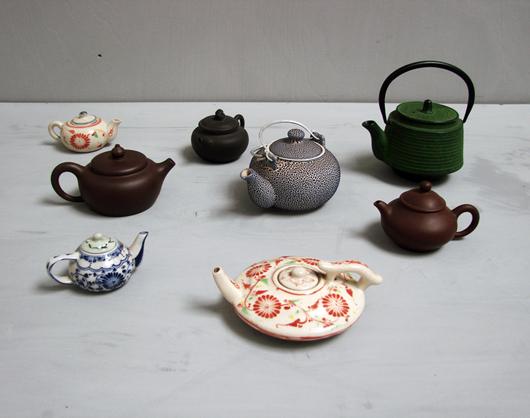
CERAMIC TEAPOTS
“These all come from Asia. I have a thing for ceramics, and the techniques used to make them, so for me, collecting these is more like research into how to use different clays, glazes, and colors. The one in the middle, the blue one, has a really weird glaze on top of it. It’s a mystery I need to figure out at some point. It’s also a surprising combination of materials, with the ceramic and the aluminum handle. I bought it in an obscure shop and the man I bought it from didn’t speak English, so we were talking with our hands and feet: I would point at what I wanted, and he would write down the price. That’s the conversation we had, without talking. I do use the green one at the back, which I bought in Tokyo and which is great for making small cups of tea. The brown ones you have to pour hot water into regularly before using, so they become more water resistent — it’s something to do with the clay, either the taste or the material gets better over time. The one in front is so flat, it’s very surprising. And they’re all so small; most of them have a diameter of 4 inches or less.”
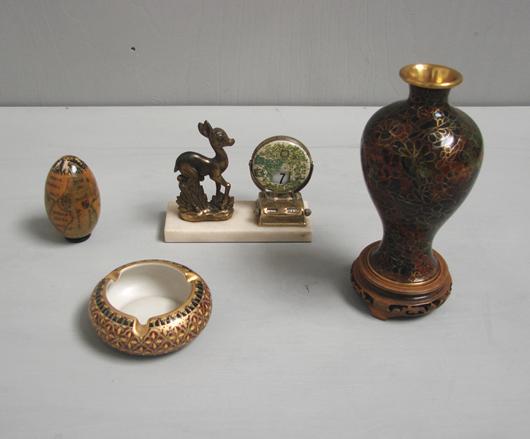 DECORATIVE KITSCH
DECORATIVE KITSCH
“Personally, to be honest, I don’t like these kind of things — they’re borderline hideous. But I don’t know, I just have them. They’re more over-the-top, with a lot of decorations and things going on in one place. Most of them are handcrafted, so that’s why there are so many details, and I guess that’s the most interesting part: that someone really took the time to make all these lines, fill them out with color, and put the work into the object.
I was unpacking my trunk and found these four items together, and thought it was kind of cool. They’re all souvenirs from different countries and gifts from friends’ travels, but they kind of fit together even though they’re from miles apart. I like gathering things that are eclectic. The ashtray came from Thailand. There’s a map hand-painted on the egg. The one in the middle with the deer is a clock made from all different kinds of materials: marble, metal, enamel. It’s the most kitsch thing ever, but I kind of like it because it brings you back to a certain kind of setting when you look at it. I was with three friends in a Belgian second-hand shop and we were all fighting for this deer. Now I never shop with more than one person because it just becomes one big argument.”
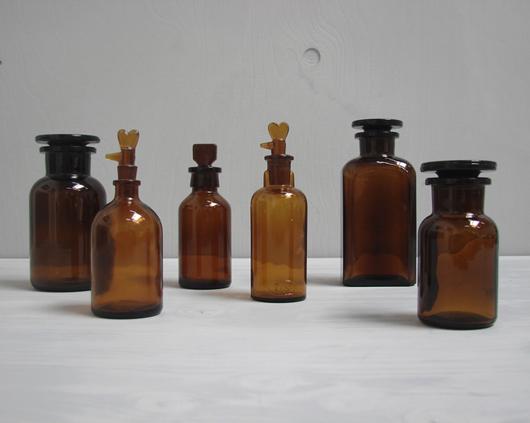 PHARMACEUTICAL BOTTLES
PHARMACEUTICAL BOTTLES
“The pharmaceutical bottles started when I was doing presentations for the Pulp collection. I really wanted to show people the basic steps behind the project — the process, the materials, the glue — so I decided to separate out all of the ingredients and show them in a laboratory-like way. And I actually do consider my studio a laboratory for products and concepts. I was fascinated by all these different bottles, and seeing them labeled with some kind of order, so I started collecting them.
“The three in the middle of this picture are old. The ones on the right are new, but I like their color. Of course there’s a reason why pharmaceutical bottles are dark: Some liquids you have to store in a dark glass. I like the system that you have to preserve things with this material, and then you can close it with the same material as well, and even make shapes on the lids like these heads. I don’t know what those heads are, I found them in a secondhand shop. Maybe they’re decorative, maybe they’re for recognizing things, maybe you can dip the beak into the liquid, like an early kind of dropper. I think I’m going to do something with these in the future. If I ever want to develop a perfume or something, the bottle should be just like this.”
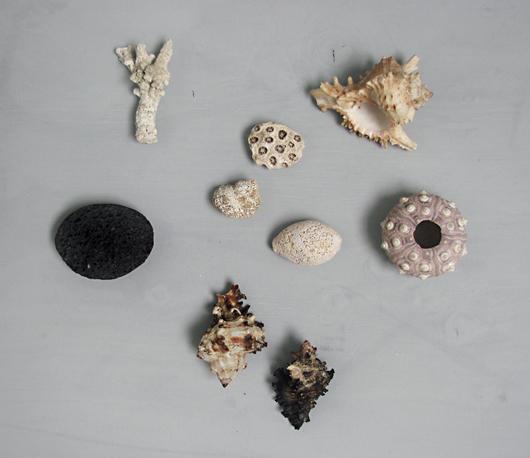
SHELLS AND CORALS
“I didn’t mean to start collecting shells. It began with two shells I borrowed from someone for a drawing session that she eventually gave to me. I went to china, found the black one, and eventually it grew. The one on the top is a coral I found on the bottom of the sea when I was swimming in Thailand. After awhile I was asking myself, why are you collecting these? I think it’s about structures and how living things can manifest themselves as a shell. It’s very inspiring when it comes to developing new products and choosing your materials — it’s nice what happens to certain materials over time.
“The black one looks heavy, but it’s actually quite light because it has the structure of a sponge that turned into a stone; it’s full of holes. People collect these and sell them as pumice. Holes are one thing that comes back into my work a lot, drilling holes into my designs to see how strong they can remain. I have some kind of attraction to these holes, so its fascinating to see how they work in nature; they probably have a function for certain shells and corals.”

